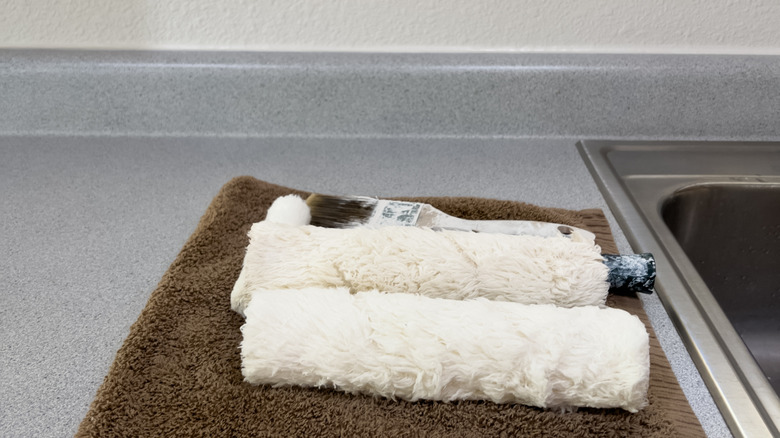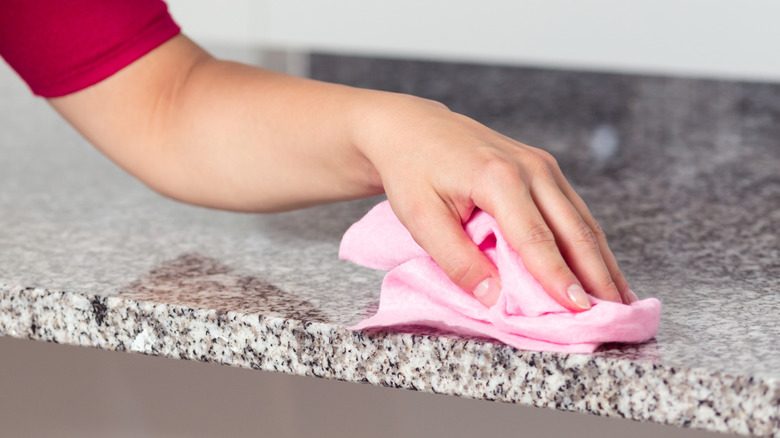The Best Method To Remove Paint From Countertops
We may receive a commission on purchases made from links.
Before painting a kitchen or bathroom, you'll likely lay down drop cloths to protect your flooring and tack on painter's tape so you don't erroneously paint outside of your walls. Still, accidents can happen, and you may still find yourself scrambling for tips to banish paint spills from surfaces. One of the less-than-ideal areas to spill paint in your home includes countertops, especially higher-end versions made with natural stone. Even if you've spilled paint on your countertops, all is not lost. The best method for removing paint from countertops ultimately depends on how long the paint has been there, the size of the spill, and the countertop material. Wet spills can usually be wiped with warm water, while dried paint may need scraping or stripping.
Fresh paint spills are the easiest to remove from countertops because they have not yet dried. First, take a clean cloth or sturdy paper towel and wipe the spill from the outside edges towards the center. Take care not to wipe the spill from the center outward, as this can cause the paint to spread and create an even greater mess to deal with. Next, dampen another clean cloth or paper towel with warm water to clean up any remaining paint from the countertop. You can also use a small amount of borax powder to create a scrubbing paste that's safe for stone. Work from the outside of the spill towards the center once again. Repeat the process until you've absorbed all of the paint spill. This method may work for nearly any countertop material, as long as the paint has not yet set in.
Remove dried paint stains via scraping or stripping methods
Ideally, you will want to address paint spilled on countertops while it's still fresh. However, it's understandable that you may not catch a small amount of paint until it has dried onto your countertop. At this point, no amount of wiping or rubbing will help. Drops and small areas of paint may be scraped off instead. Simply take a sharp, undamaged razorblade and gently scrape until the paint lifts off from your countertop. Try placing the blade at a 45-degree angle to help "lift" the stain, and repeat in layers if necessary. Do not saw the blade into the paint. This method is especially beneficial for stone countertops to help avoid the damage that can come from chemical paint removers.
If you have a large area of paint dried onto your countertop, you may need to use paint thinner to strip the paint, regardless of the type of countertop you have. This involves liquid commercial products you can buy from a home improvement store, such as the Max Strip Paint and Varnish Remover. Before using commercial paint thinners, make sure the area is well-ventilated and wear gloves, a mask, and goggles. Follow all product instructions carefully and avoid combining the paint thinner with any other chemicals. Also keep in mind that despite their necessity for removing a large amount of paint from natural stone, paint strippers, like cleaning ingredients, can damage stone countertops. In such cases, you may need to repolish your countertops after removing the paint to restore their luster and protect them from further damage.

